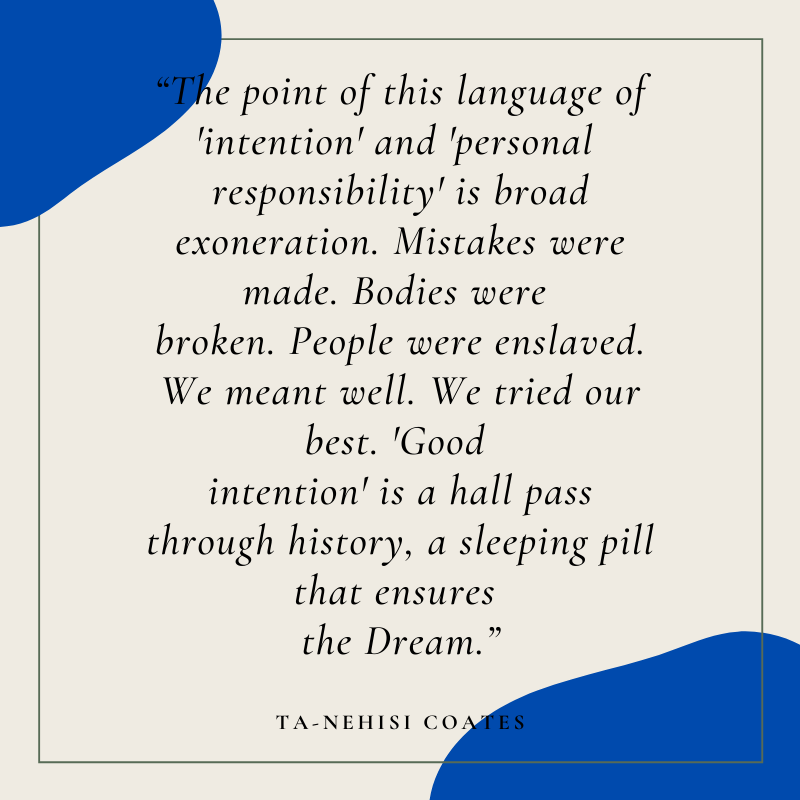Affiliate links may be included for your convenience. View our privacy and affiliates policy for details.
I am not an expert on how to amplify Black voices (or anything else related to race, racism, being an ally, etc.), but it feels to me like a lot of people aren’t approaching it the right way right now.
Which is not at all to say I’m doing it right, or know how to do it right, or that there’s only one way to do it right, or that there’s a right way at all.
I tend to think because my platform is tiny it doesn’t matter if I share what I think. Because other people have done so much more work than I have, I should not even bother to add my voice.
And I do truly feel like the goal here is to lift up not just Black voices, but all BIPOC (that’s Black, Indigenous, People of Color) people. And I feel like a lot of us — myself included — can take this moment to start doing better.

There was this big push in social media recently to black out feeds, either by not posting anything or literally posting a black box, with the intent of showing support for black people amid the current protests over the killing of George Floyd in particular and so many recent incidents of violence and mistreatment at the hands of police and regular white folks.
Just about all I saw in my Instagram feed that day was black boxes.
Which I feel like just made a lot of white people feel better, like they had done something, when it really doesn’t do anything to move forward the cause of Black liberation, antiracism, or anything else.
If anything it drowned out black voices more because people who might not have posted otherwise wanted in on the action.
What to Do First
If the goal is to amplify Black voices, to share what black and brown people are doing and thinking and feeling, that means you need to be quiet. It starts with doing your own work and listening before you start trying to share.
(Bearing in mind that doing your own work is an ongoing, never-ending process, but at the very least you need to start there.)
Follow people of color on the platforms where you hang out. Do the reading and watch the documentaries (so many great lists are going around, and I’ll list some of my favorites below). LISTEN. Do not inject yourself into discussions because you want to feel seen or you want people to think of you as someone who gets it.
(I understand it could be perceived that I’m writing this post because I want to be seen as someone who gets it. It’s not that at all. This comes from a real sense of frustration about what some white people have been doing in this latest crisis.)
Also: a big part of listening is remembering that it is no person of color’s job to educate you on their lived experience or the centuries of systemic racism that have brought us to where we are. You need to do the work yourself.

How to Amplify Black Voices Thoughtfully
First: don’t go looking for BIPOC voices to share just because its trendy for a few weeks. Consciously listening and sharing should be a regular part of your life, not something you do because you saw a hashtag.
Most of you know my main craft is knitting, and we’ve been seriously reckoning with racism in the knitting community for about a year and a half now.
It was an awakening for a lot of people, though it shouldn’t have been surprising, to learn that BIPOC knitters were met with surprise and suspicion in yarn shops. People of color were not widely attending industry events or invited to teach. Designers of color had trouble getting their designs published.
White women designing boxy cardigans with wide sleeves and calling them kimonos (among other appropriations) was hurtful and not being called out as appropriation.

It reflects on my level of privilege to admit that I had never really thought about it.
Of course I knew there were knitters of color, and there must be loads of designers of color, though when someone asked for recommendations of knitting books written by people of color, I could only easily think of two authors. And I used to review knitting books as part of my job.
Since that collective wake-up call in the knitting world began, I’ve made a conscious effort to share more creations by BIPOC designers, and to buy more yarn and patterns from designers of color.
It should surprise no one that once I bothered to look there were lots of people to share and amazing products to buy. It’s the same in whatever space you’re in.
Share things you actually love, that are important to you, that correspond to your beliefs and feelings. Not just what everyone else is sharing. Dig deeper. Share on all your platforms, in different ways that make sense for you. And, again, continue to do your own work, learn better, do better. Repeat.
A Brief List of Resources
Again, I know I still have a lot of work to do and there are lots of amazing resources I’m not familiar with, but here are some things that have been helpful for me.
Books
I didn’t love White Fragility as much as a lot of people did, but it’s a solid place to start. Between the World and Me should be essential reading. The New Jim Crow gives good insight into the problem of mass incarceration and the police state.
There are so many books I want to read, too, and this amazing graphic from Jane Mount covers a lot of them:
But honestly reading anything by a writer of color is worth your time for getting a different perspective on the world. Some good options in this thread.
Movies and Documentaries
13th and When they See Us, both on Netflix, are a great place to start understanding what is and has been going on between people of color and the police for generations.
I haven’t watched it yet but I’m seeing lots of recommendations for I Am Not Your Negro, about James Baldwin. And if you don’t want to read the book, I have heard good things about the movie The Hate U Give (I read the book but have not seen the movie. Reading more than watching is a theme for me).
During the month of June you can watch Just Mercy free on a variety of outlets.
This list has some more great documentaries to watch “instead of asking a person of color to explain things for you.” (The list is Australian so it has some aboriginal documentaries on it as well.)
More Things Worth Checking Out to Amplify Black Voices and Learn from Them
- No White Saviors (Instagram)
- The Great Unlearn: self-paced lessons on racial justice, history and other issues
- Where Change Started: self-guided resources for becoming antiracist (see also the antiracism starter kit)
- Urban Intellectuals Black History Flashcards
- The 1619 Project from the New York Times
- The Case for Reparations by Ta-Nehisi Coates
- An Open Letter to My Non-Black Friends by Nicole Ruthmarie Watkins
- Stop Asking Black Women to Explain Discrimination by Brandi Riley
- Support BIPOC businesses when you can — if you don’t know them, do your research
- Donate if you can. There are local organizations all over the country doing good work for Black and brown people. Or give to a national organization like the NAACP or the Bail Project.
- Compensate people who you learn from.
- Find people of color running for political office and support them. VOTE.
- Keep learning. Ask hard questions of yourself and the people around you. Don’t be afraid to have tough conversations.
- Know that you will sometimes get it wrong. I know I have.
- Continue to amplify Black voices wherever and whenever you can.
I would love to hear what you are dong to dismantle racism in yourself and the resources you are using to educate yourself.



